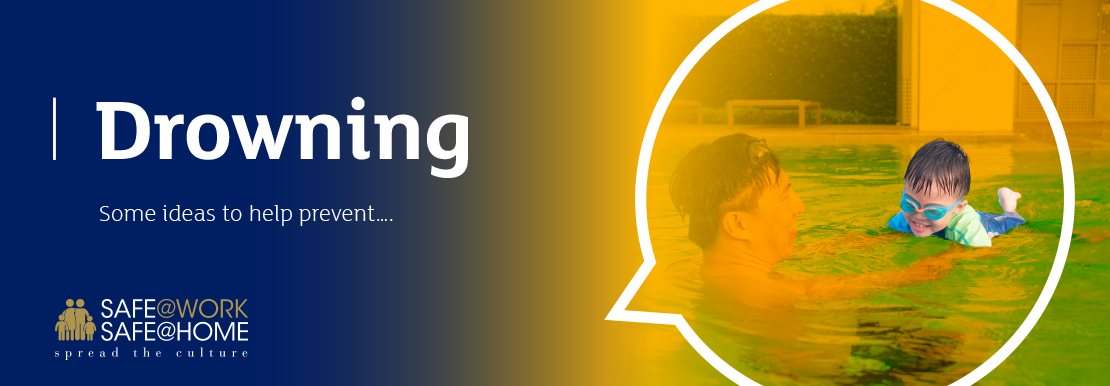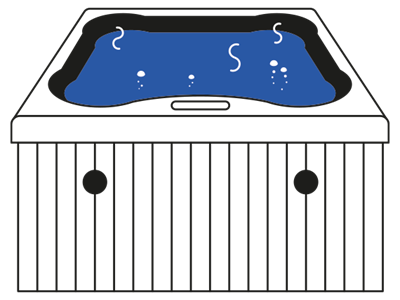
Drowning Prevention
Water is an essential part of our daily lives, whether it's for washing, transportation, work or leisure activities. Unfortunately, drowning incidents occur regularly and often silently, both in homes and outdoor settings.
There is substantial and credible evidence available that recognises the risks and benefits from water. To ensure children's safety during their everyday activities, it is crucial to address drowning at national, community and family levels.
Drowning is a preventable tragedy, and water safety education plays a vital role in empowering parents with the knoweledge to protect their children. By providing parents with the right information, we can work towards creating safer environments and reduce the risk of drowning incidents.
Why is drowning prevention important?
Drowning is the third leading cause of unintentional fatal injury worldwide, accounting for 7 per cent of all injury-related deaths. For children (1-14 years), it is among the top five causes of death in 48 countries worldwide.
"Death disproportionally affects the young, while survivors can be left with life-changing and disabling injuries such as permanent brain damage, requiring a lifetime of care".
Learning how to swim
Teaching your child to swim is a crucial step in helping them acquire this vital life skill within a safe and supervised environment. Besides boosting their confidence, exposure to water not only boosts their confidence but also provides an excellent opportunity to discuss water safety and educate them about the potential risks and hazards.
Always learn with a qualified swimming teacher.
Arm jackets and swim jackets can be helpful but ensure your child is wearing the appropriate size.
Learning skills such as Float To Live and, in colder climates, understanding how to deal with Cold Water Shock, are of utmost importance.
Rescue and lifesaving skills – for everyone
Knowing how to safely help others by using the reach and throw rescue technique from the land will help older children protect themselves
and their family.
Learn how to perform CPR and rescue breaths. Know how to raise emergency help.
We’d also advise parents and carers to take a child on a first aid training course – they’re available from a variety of providers.
If someone has been rescued from the water, they should go to hospital. Even if they seem okay.
How to prevent drowning at home
Bathtime
Bathtime is not just about getting your little ones clean – it’s a time to play and relax before bed. Drowning in baths is sadly common.
1: Stay within arm’s reach
This is the single most important thing you can do to keep your child safe. Even if there's an older brother or sister in the bath, never leave them for a moment. Wet soapy babies are slippery, and if they slide down or roll over, they can’t always right themselves, and you won’t always hear them trying. So even if the phone rings or the doorbell goes, stay within arm’s reach.
2: Take care when running a bath
It’s impossible to have eyes in the back of your head. That’s why it’s important to take care when running a bath. Toddlers are naturally inquisitive and love to climb. Even a few centimetres of water can be deadly, so stay in the bathroom.
3: Pull the plug
Just as it’s important to take care when the bath is running, a bath left full once a child has got out can still be dangerous. Pull the plug the
moment bath time is over.
4: Avoid bath seats
Baby bath seats might look helpful, but by leaving your hands free they can give you a false sense of security. If you use a bath seat, remember that it is not a safety device. You still need to stay with your baby all the time. As ever when water is involved – supervision really is key.
5: Stop slips
It only takes a second for an accident to happen. Energetic toddlers and wet, slippery baths don’t go well together! A non-slip bathmat or stickers can help stop a nasty fall. Wipe up any spill in the area immediately.
Garden ponds
Ponds make a great garden feature and they’re good for wildlife too. Unfortunately they're not so good for young children. In fact, garden ponds are involved in more than half of all toddler drownings, with five under-sixes drowning every year in ponds in the UK.
Our advice is simple. If you have young children, or have children who regularly visit, you’re either better off placing a fence around a pond, a grille over it, or filling it in altogether, at least until they are old enough to be safely around ponds.
Grille it!
Covering a pond is a good option for some people. Just make sure you use a rigid metal grille rather than flimsy chicken wire. Don't forget to check it regularly to make sure it's up to the job of keeping young children out of
the water.
Fence it!
Another good option, although it can sometimes give you a false sense of security as most young children are excellent climbers. If you do choose a fence, make sure it's at least 1.1m high and that access points such as gates are kept locked.
Fill it!
There are some great options for transforming your pond into something else while the little ones are young,
such as a flowerbed or even a sandpit.
Swimming pool safety
Backyard swimming pools can provide hours of endless fun but drowning in swimming pools is common and it's important to always supervise
children around the pool.
Supervision is key – even children that can swim should be actively supervised
Fence or barrier off the swimming pool completely with a childproof safety barrier and a self-locking gate
Ensure objects like plants pots are well away from the fencing so that children cannot climb over
Take a first aid course. Know how to resuscitate a child
Inflatables are not a substitute for supervision or swimming ability.
Paddling pools
Paddling pools can be great fun. However, it’s important to always watch toddlers while they’re paddling, and to always empty the paddling pool straight after use. Also, be extra aware following periods of heavy rainfall, which could potentially re-fill a paddling pool or cause other unexpected puddles.
Hot tubs
Hot tubs are great for social, stress-relieving and relaxation benefits. It is important however to stay safe and protect children from the risk of harm.
Our key advice for keeping children safe:
Buy a hot tub with a solid and lockable cover - one that a child can only open with adult help
Make sure your hot tup is covered when not in use
Supervise - always ensure children are supervised when around an open hot tub
Store chemicals safely - ensure they are stored out of reach of young children
Children under five should not go in a hot tub

Safety on the beach
Exploring and visiting new places is always fun, but if you are going to the beach, it's important to understand the risks so that you and your family can have a safe and enjoyable experience.
At the beach:
Visit a lifeguarded beach where possible
Always supervise your children
Ask for local advice about the beach from lifeguards, local shops and tourist information
Look out for beach flags and learn what they mean
Tide times change throughout the month - before setting off make sure you check the tide tables, so you don’t get cut off
Check the water conditions before you think about going into the water – if the sea is rough or you witness high currents, avoid going into the water
Avoid swimming near rocks or coral
Novelty inflatables are not suitable for the coast as strong currents can rapidly sweep them out to sea.